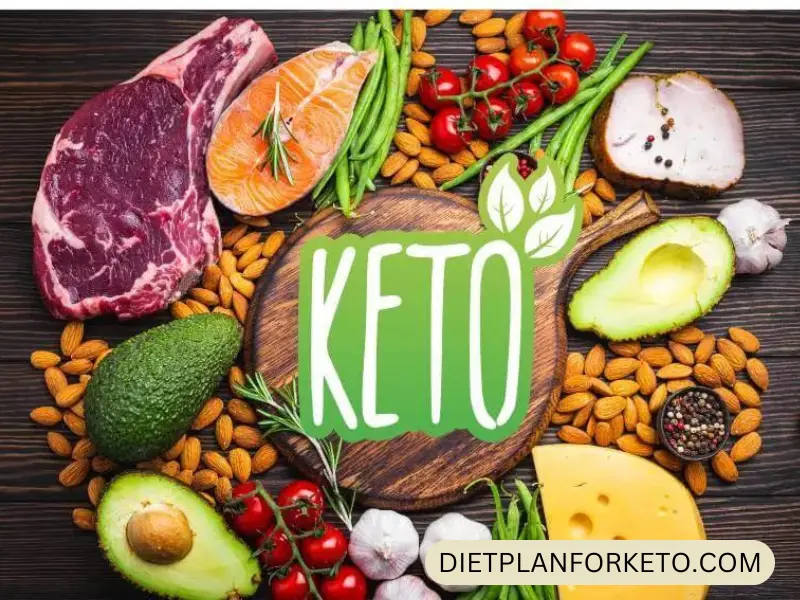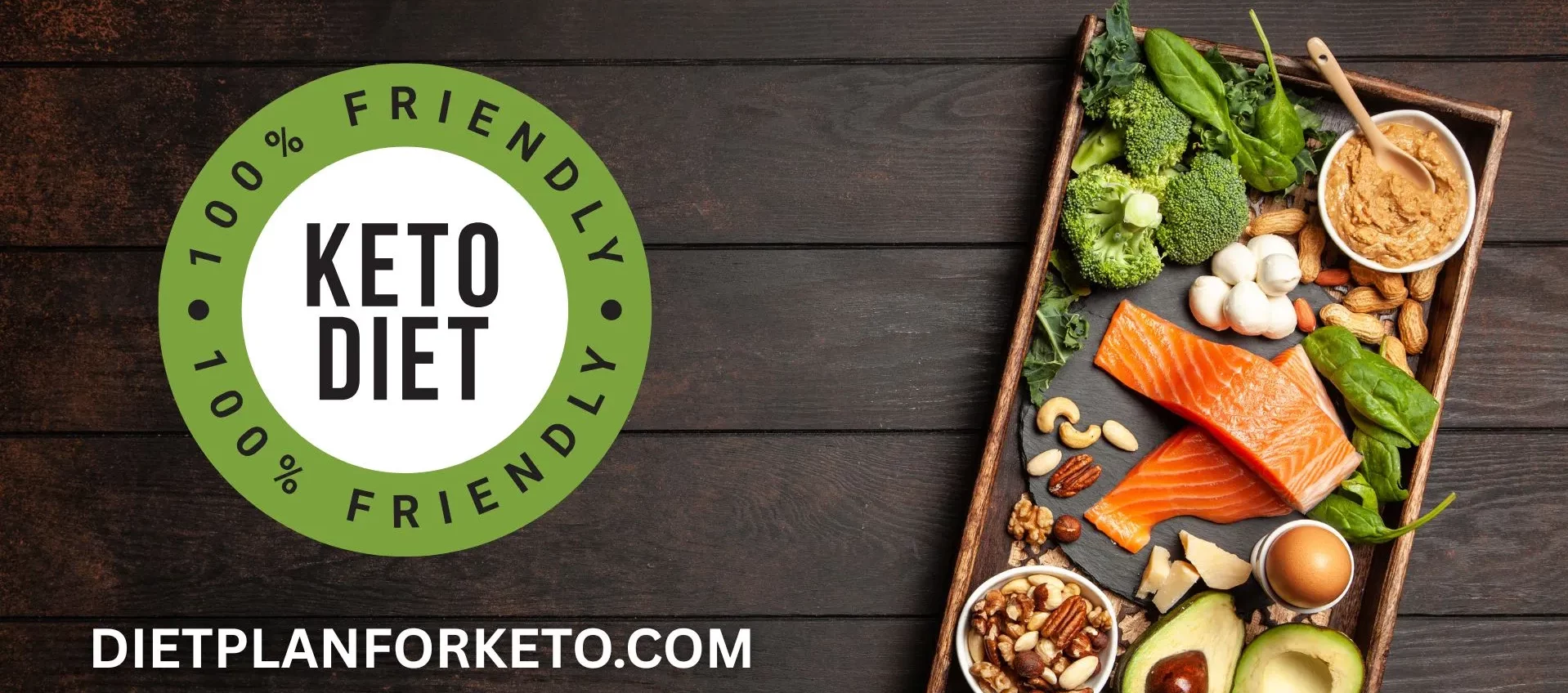The ketogenic diet, often called “keto,” has rapidly gained popularity for its ability to help people lose weight, improve mental clarity, and support overall health.
At its core, the keto diet is a low-carb, high-fat eating plan that shifts the body’s primary fuel source from carbohydrates to fats.
This guide will walk you through everything you need to know about starting a keto diet—from understanding its principles and health implications to recipes and practical tips to keep you on track.
Section 1: Understanding the Keto Diet Basics
What is the Keto Diet?
The ketogenic diet is designed to shift the body into a state of ketosis, where it burns fat for energy instead of carbohydrates.
This is achieved by significantly reducing carbohydrate intake and increasing fat intake, prompting the liver to produce ketones, which the body uses as an alternative fuel source.
Key Keto Diet Components:
- Carbohydrates: Limited to around 20-50 grams per day to trigger ketosis.
- Fats: Comprise about 70-80% of daily calorie intake.
- Proteins: Moderate intake, usually about 20-25% of daily calories.
Why the Keto Diet Works
On a standard diet, the body primarily uses glucose (from carbohydrates) for energy. When carbs are drastically reduced, the body turns to fat as its primary fuel source.
During ketosis, the liver produces ketones from fatty acids, which provide steady energy to the brain and body.
Is the Keto Diet Safe?
The keto diet is safe for most people but is not suitable for everyone. While it has been shown to offer benefits like weight loss, blood sugar control, and improved cognitive function, it may not be ideal for individuals with certain medical conditions, such as liver disease, pancreatitis, or gallbladder disease.
Potential Risks:
- Keto Flu: Temporary symptoms like fatigue, headache, and irritability that occur as the body adjusts to ketosis.
- Nutrient Deficiency: The diet limits certain food groups, so monitoring nutrient intake (especially fiber, vitamins, and minerals) is essential.
Section 2: How to Start the Keto Diet at Home for Free
Starting keto at home doesn’t require expensive supplements or special foods. Here are budget-friendly ways to begin your keto journey.
Step 1: Learn About Macros
Macros (macronutrients) are the building blocks of keto. To follow the diet effectively, you’ll need to calculate your target intake of carbs, proteins, and fats.
Macro Calculation Guide:
- Carbohydrates: Limit to 20-50g net carbs per day (net carbs = total carbs – fiber).
- Proteins: Aim for 0.6-1.0g per pound of body weight.
- Fats: The remaining calories should come from fats.
Free Tools for Tracking Macros:
- MyFitnessPal and Carb Manager: Free apps that help you log meals and track your carb intake.
Step 2: Create a Keto-Friendly Grocery List on a Budget
You don’t need to buy expensive ingredients to start keto. Affordable keto foods include eggs, chicken, leafy greens, butter, and oils.
Budget-Friendly Keto Staples:
- Proteins: Eggs, chicken thighs, ground beef, and tuna.
- Fats: Olive oil, coconut oil, avocados, and full-fat dairy.
- Veggies: Spinach, kale, zucchini, and frozen cauliflower.
Step 3: Prepare for Keto Flu
The keto flu is common in the first week of keto, causing symptoms like headache, fatigue, and irritability. These symptoms occur as your body adjusts to a low-carb intake.
Tips for Managing Keto Flu:
- Stay Hydrated: Drink plenty of water.
- Electrolytes: Increase intake of sodium, potassium, and magnesium. Try adding a pinch of salt to water or sipping on bone broth.
- Rest: Make sure you’re getting adequate sleep and rest as your body adjusts.
Section 3: How to Start Keto on the First Day
The first day on keto may seem challenging, but following a simple plan can ease the transition.
Day 1 Plan: Practical Steps
- Start Your Morning:
- Begin with a high-fat breakfast, such as scrambled eggs with cheese and avocado. This will kickstart your fat intake and keep you full.
- Plan Simple Meals:
- For lunch and dinner, stick with high-fat proteins and low-carb vegetables, like grilled chicken with spinach or a cheese-topped burger with a side of zucchini.
- Avoid Sugars and Grains:
- Refrain from consuming any sugars, grains, or high-carb vegetables. Focus on foods like eggs, cheese, meats, and low-carb vegetables.
Getting into Ketosis ASAP
To enter ketosis faster, follow these essential tips:
- Reduce Carbs Aggressively: Keep carb intake under 20g per day.
- Drink Water with Electrolytes: This helps manage energy levels and reduce keto flu symptoms.
- Eat Healthy Fats: Boost your fat intake to help your body adapt quickly to using fat as fuel.
Section 4: How Beginners Can Get into Ketosis Quickly
What is Ketosis and How Does it Work?
Ketosis is a natural state that occurs when the body starts burning fat instead of carbohydrates for energy. In ketosis, the liver produces ketones, which fuel the body and brain.
How to Tell if You’re in Ketosis:
- Reduced Appetite: Many people feel less hungry.
- Energy and Mental Clarity: People often experience more energy and focus.
- Keto Breath: A slight fruity smell on the breath due to acetone, a ketone byproduct.
Quick Tips for Entering Ketosis
- Intermittent Fasting: Try an intermittent fasting schedule, like 16:8 (fasting for 16 hours and eating within an 8-hour window), to speed up ketosis.
- Exercise Regularly: Light cardio or strength training helps the body burn stored glucose more quickly.
- Limit Net Carbs to 20g: Tracking your carb intake carefully is essential.
- Consume MCT Oil: Medium-chain triglycerides (MCTs) are quickly converted to ketones, helping your body adapt to ketosis faster.

Section 5: 9 Essential Rules of the Keto Diet
Following these foundational rules will help beginners stay on track with keto:
- Limit Carbs to Under 20-50g Daily: Staying under this limit is key to triggering ketosis.
- Increase Healthy Fats: Avocados, olive oil, and nuts are great sources.
- Moderate Protein Intake: Avoid going overboard with protein, which can turn into glucose in the body.
- Hydrate Regularly: Drinking enough water is crucial for health and keto flu prevention.
- Prioritize Sleep: Quality sleep supports weight loss and energy levels.
- Avoid Processed Foods: Stick with whole foods; processed foods often contain hidden carbs.
- Take Electrolytes: Incorporate sodium, potassium, and magnesium daily.
- Track Macros and Progress: Use an app or a journal to track your food intake and progress.
- Be Patient and Consistent: Keto is a lifestyle, not a quick fix.
Section 6: Sample Keto Meal Plan with Recipes
Breakfast Recipe: Keto Avocado and Egg Bowl
- Ingredients:
- 1 ripe avocado
- 2 large eggs
- Salt and pepper to taste
- 1 tbsp olive oil
- Instructions:
- Cut the avocado in half, remove the pit, and scoop out a small amount to make room for the eggs.
- Heat olive oil in a skillet, crack eggs into the skillet, and cook to your liking.
- Place eggs into the avocado halves, sprinkle with salt and pepper.
- Carb Count: Approximately 4g net carbs per serving.
Lunch Recipe: Keto Caesar Salad
- Ingredients:
- 2 cups romaine lettuce, chopped
- 1 grilled chicken breast, sliced
- 1/4 cup grated Parmesan cheese
- 1/4 cup low-carb Caesar dressing
- Instructions:
- In a bowl, combine romaine lettuce, grilled chicken, and Parmesan.
- Drizzle with Caesar dressing and toss to coat.
- Carb Count: Approximately 5g net carbs per serving.
Dinner Recipe: Garlic Butter Shrimp with Zoodles
- Ingredients:
- 1/2 lb shrimp, peeled and deveined
- 2 medium zucchinis, spiralized
- 2 tbsp butter
- 1 clove garlic, minced
- Salt and pepper to taste
- Instructions:
- In a skillet, melt butter, add garlic, and cook for 1 minute.
- Add shrimp and cook until pink, about 3 minutes.
- Add zoodles to the skillet, toss with shrimp, and season with salt and pepper.
- Carb Count: Approximately 6g net carbs per serving.
Snack Idea: Cheese and Cucumber Roll-Ups
- Ingredients:
- 1 cucumber, thinly sliced
- 4 oz cream cheese
- Salt and pepper
- Instructions:
- Spread cream cheese on cucumber slices, roll them up, and sprinkle with salt and pepper.
- Carb Count: Approximately 3g net carbs per serving.
Drink Idea: Keto Electrolyte Lemonade
- Ingredients:
- 1 lemon, juiced
- 1/2 tsp salt
- Stevia or monk fruit sweetener
- Ice and water
- Instructions:
- Mix lemon juice, salt, and sweetener in a glass of water. Add ice and stir.
- Carb Count: Approximately 2g net carbs per serving.
Section 7: Staying Consistent and Overcoming Challenges
Consistency is key to keto success. Track your progress, keep meals interesting, and address any challenges as they arise.
Tracking Progress
Use apps to log your food intake, track macros, and monitor your physical progress. This accountability can help identify areas of improvement and keep you motivated.
Handling Social Situations
It’s easy to stay keto at home, but social gatherings can present a challenge. Here are a few tips:
- Plan Ahead: Eat a keto-friendly meal before attending events to avoid temptation.
- Choose Wisely: At restaurants, stick with grilled meats and low-carb vegetables.
- Be Confident: Explain your dietary preferences if asked and politely decline high-carb options.
Conclusion
Starting the keto diet can be a transformative experience. By following these practical steps, sticking to the nine keto rules, and enjoying delicious, low-carb recipes, you’ll be well on your way to achieving ketosis and reaping the many benefits of this lifestyle.
Remember, patience and consistency are essential, and with a bit of dedication, the keto diet can help you reach your health and wellness goals. Enjoy your keto journey!
